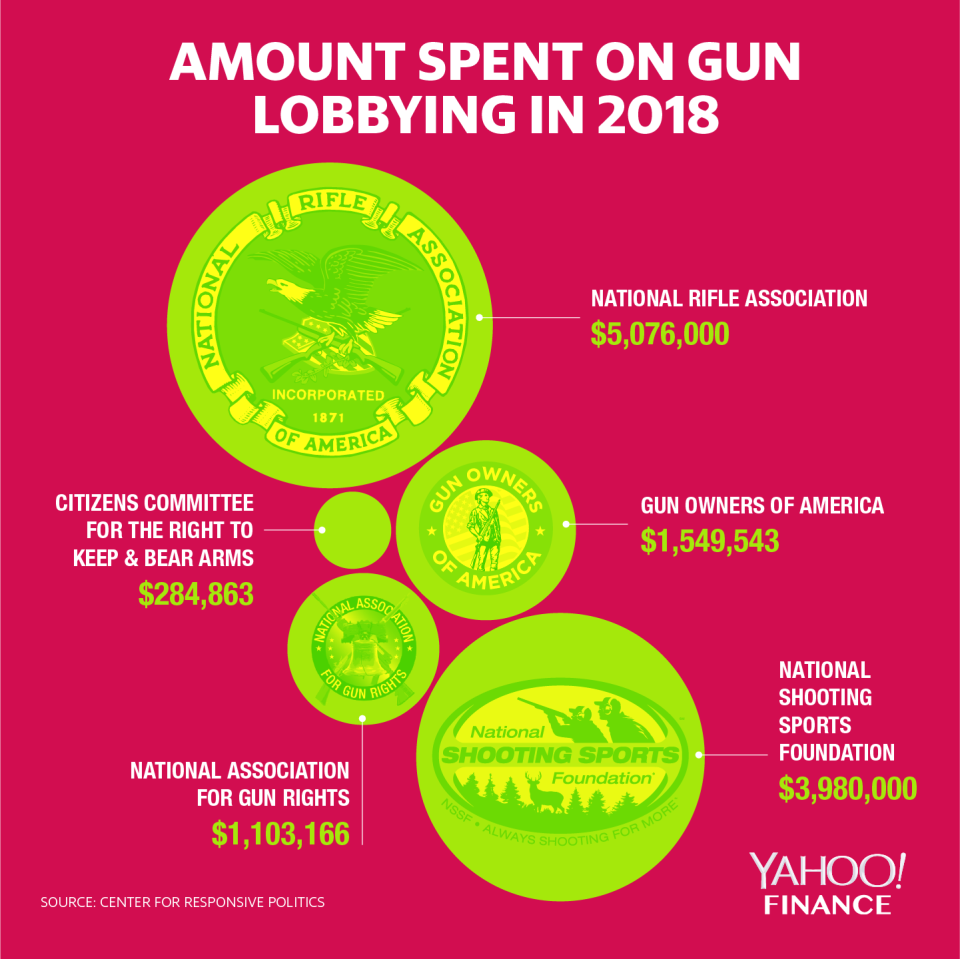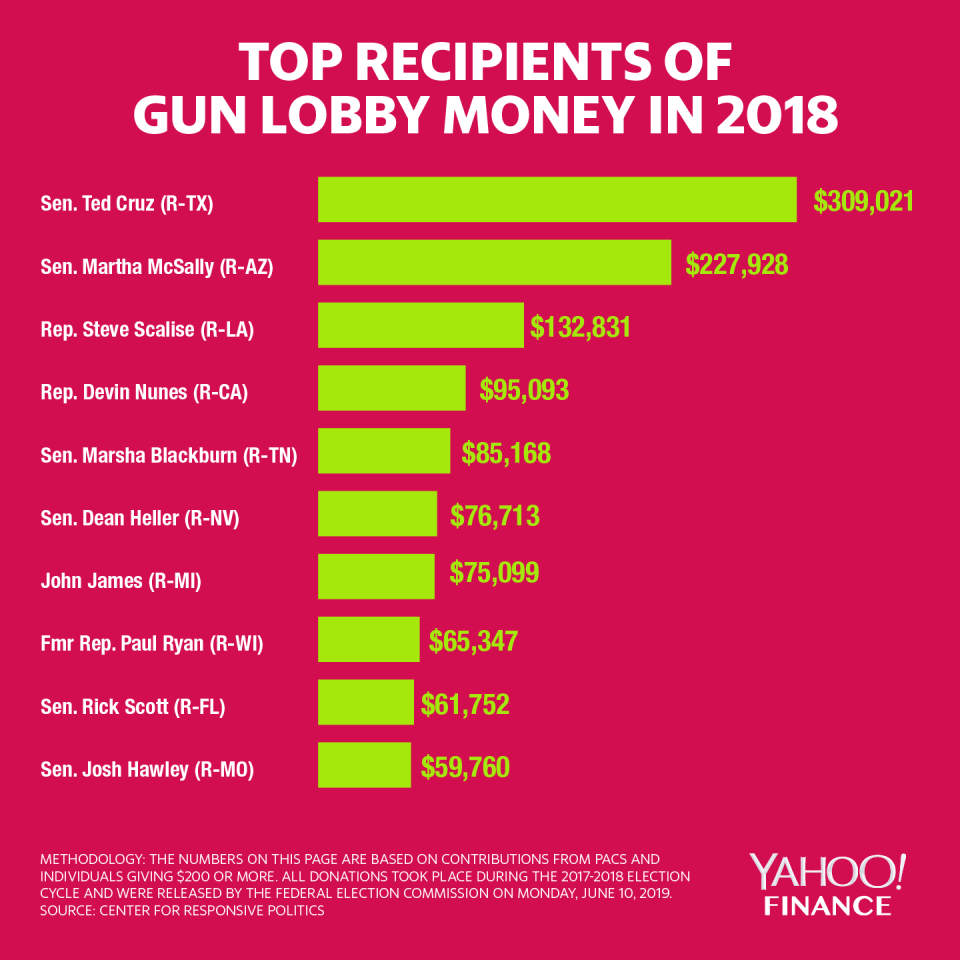Gun violence costs the United States $200 billion each year
The two mass shootings over the weekend in El Paso, Texas, and Dayton, Ohio, left dozens dead and even more injured. As of Aug. 5, there have been more than 250 mass shootings in the country; at the current rate, the United States will be on pace for more than one mass shooting a day. Each shooting is an American tragedy with far-reaching impact.
And in America, where gun violence was responsible for nearly 9,000 deaths so far this year, it also costs the country some $200 billion, thanks to negative effects on health care, the economy, the judicial system, and more.
A drag on health care
Treating victims of gun violence in the United States is costly. According to a study from researchers at Johns Hopkins University, caring for patients with gunshot wounds in the emergency room costs $5,254, while admitting them to inpatient care runs an additional $95,887. The study estimates that each year, the financial burden of gun violence is roughly $2.8 billion from emergency department and inpatient costs.
But that’s just the cost of immediate treatment when a gunshot victim arrives at the hospital. According to a blog post from Faiz Gani, one of the study’s authors, the total financial burden for a gunshot victim is more than $160,000. With roughly 17,500 gunshot injuries reported so far this year, the drag on health care is $2.8 billion in 2019 — and counting.
Dr. Joseph Sakran, director of Johns Hopkins Emergency General Surgery and one of the study’s authors, says that the figure only accounts for hospital care, and does not include societal costs. “When you look at those costs, it is clear that number is much higher, with estimates at $229 billion,” Sakran said. “Our number of $2.8 billion is also perhaps conservative, and from one database. There are some other estimates looking at direct expenses such as emergency and medical care, at $8.6 billion.”
That isn’t all. Gani writes, “the CDC estimates that each year, approximately $46 billion are lost due to firearm-related injuries,” once you consider the costs of “rehabilitation, repeat admissions, and lost work.”
“This figure is comparable to the $49 billion spent to treat patients with chronic obstructive pulmonary disease, the third leading cause of death in the United States,” the blog adds.
A blow to the economy
Often when gun violence and the economy are linked, it is thought that areas of poverty have higher incidents of crime. However, gun violence also negatively impacts the economies of the surrounding areas.
According to information compiled for Yahoo Finance by the research organization the Institute for Economics and Peace (IEP), the cost of gun violence amounts to $200 billion each year, taking into account costs relating to health care, the judicial system, local economies, among others. “To put this into perspective, this is twice the size of the GDP of Hawaii ($92 billion) or New Mexico ($99 billion),” IEP tells Yahoo Finance.
Studies from the Urban Institute show the rippling impact of gun violence on local communities. Home values depreciated by approximately 4% the following year, according to their data, while firearm incidents also decreased credit scores and homeownership rates.
Gun violence has also reduced the growth rate of new retail and service businesses, according to the Urban Institute. “Across Minneapolis, Oakland, San Francisco, and Washington, DC, gun homicide surges in neighborhoods reduced the growth rate of new retail and service establishments by 4%,” the Institute writes.

And IEP says the lives lost due to gun violence wipes out contributions those people would have made to the economy: the income losses are “significant.” “For instance, when a 20-year-old is killed by gun violence, 40 years of potential wages are lost from the economy,” the IEP says.
According to the Social Security Administration, the average wage in 2017 was roughly $49,000. Assuming that a person earns no more over their lifetime, the economy loses $2 million for every young adult killed from gun violence. As a rough sketch, that means if every person who unfortunately died from gunshot wounds in 2018 were 20 (data shows the majority of gun victims are young), the United States would have lost $29 billion in potential earnings — in just one year.
Inversely, reducing gun violence has positive effects on the economy. The Urban Institute found that in Washington, D.C., every 10 fewer incidents of gun violence was related to one new business opening, the creation of 20 more jobs in new businesses, $1.3 million more in sales at new businesses and one less business closure.
“There is extensive research on the impact of gun violence in the United States,” the IEP wrote in an email to Yahoo Finance. “However, in the U.S. there is need for programs and policies that can effectively prevent or reduce gun violence.”
The Dickey Amendment
So why hasn’t more been done to research effective programs and policies that can reduce gun violence?
The answer can be found in the “the Dickey Amendment.” In 1996, Congress cut funding to the CDC after a controversial study about gun ownership was released. The cuts effectively ended their research on gun violence as a public health issue.
Dr. Sakran stresses that the CDC wasn’t banned from doing gun research, but that the Dickey Amendment sent a very clear message. “When the Dickey Amendment was passed,” he said, “Congress also stripped the CDC of $2.4 million. That number is not random. That is the same amount the CDC spent the year prior on firearm injury prevention research. So the CDC was frightened to continue work in this space, for frankly the fear of being bankrupt. This led to a 20+ year moratorium.”
“The data is critical so we can help develop evidence-based strategies to guide our policy makers to make the right decision,” he added.
A powerful lobby
But even as public opinion changes about gun control in America, politicians still must contend with the powerful gun lobby.
Data from Pew Research shows that over 80% of Americans favor stricter gun control laws, from preventing the mentally ill from purchasing weapons to background checks for private sales, and at gun shows. And yet, little has been done by way of gun reform.

According to the Center for Responsive Politics, the gun lobby spent more than $11.8 million in 2018. By contrast, gun control advocates spent $2 million. The National Rifle Association (NRA) spent the most, shelling out over $5 million to lobby candidates in support of gun rights.
And politicians like Sen. Ted Cruz (R-TX), Sen. Martha McSally (R-AZ), and Rep. Steve Scalise (R-LA) received the most in 2018, splitting more than $600,000 between them. With so much spent each year to preserve gun ownership and rights, guns have become a big business.
Dr. Sakran says gun violence is more than just “numbers and statistics,” and says that explaining to family members that their loved one is never coming home is “the worst part” of his job. As a survivor of gun violence, it’s a story he knows intimately.
“These are human beings, members of our community, the fabric of our society. And this is quickly unravelling leaving us with a nation that is devastated.”
Kristin Myers is a reporter at Yahoo Finance. Follow her on Twitter.
Read more:
‘Baby bonds’ bill aims to give children up to $50,000 to start adulthood
Keeping children in ‘cages’ costs American taxpayers more than $4.5 million daily
Follow Yahoo Finance on Twitter, Facebook, Instagram, Flipboard, LinkedIn, YouTube, and reddit.
Read the latest financial and business news from Yahoo Finance

